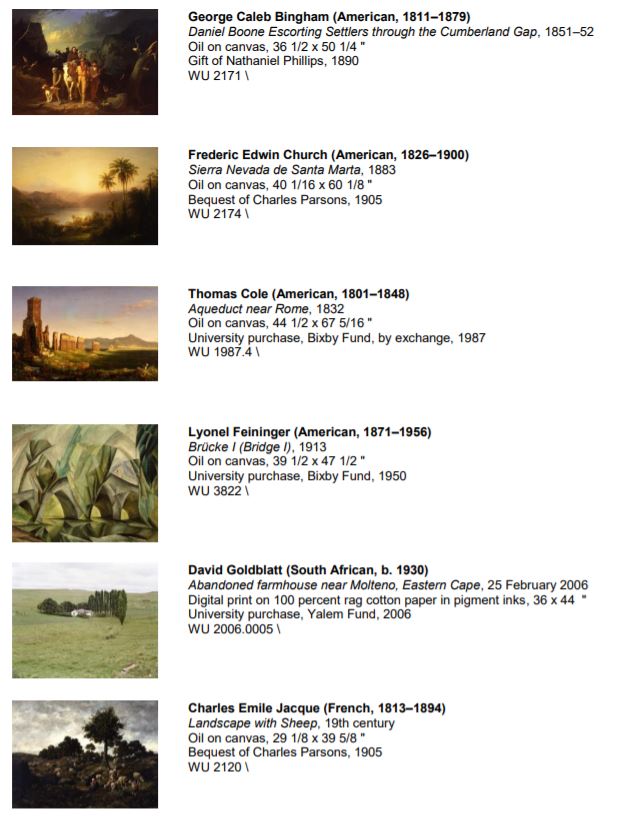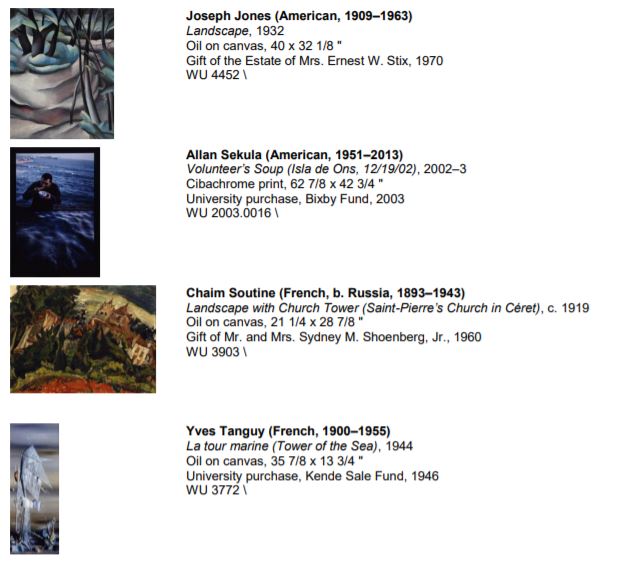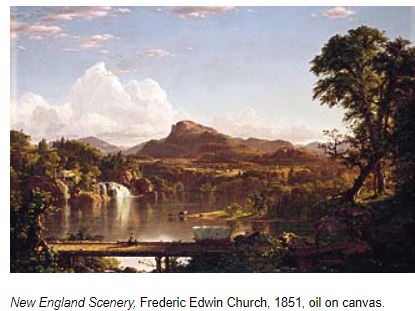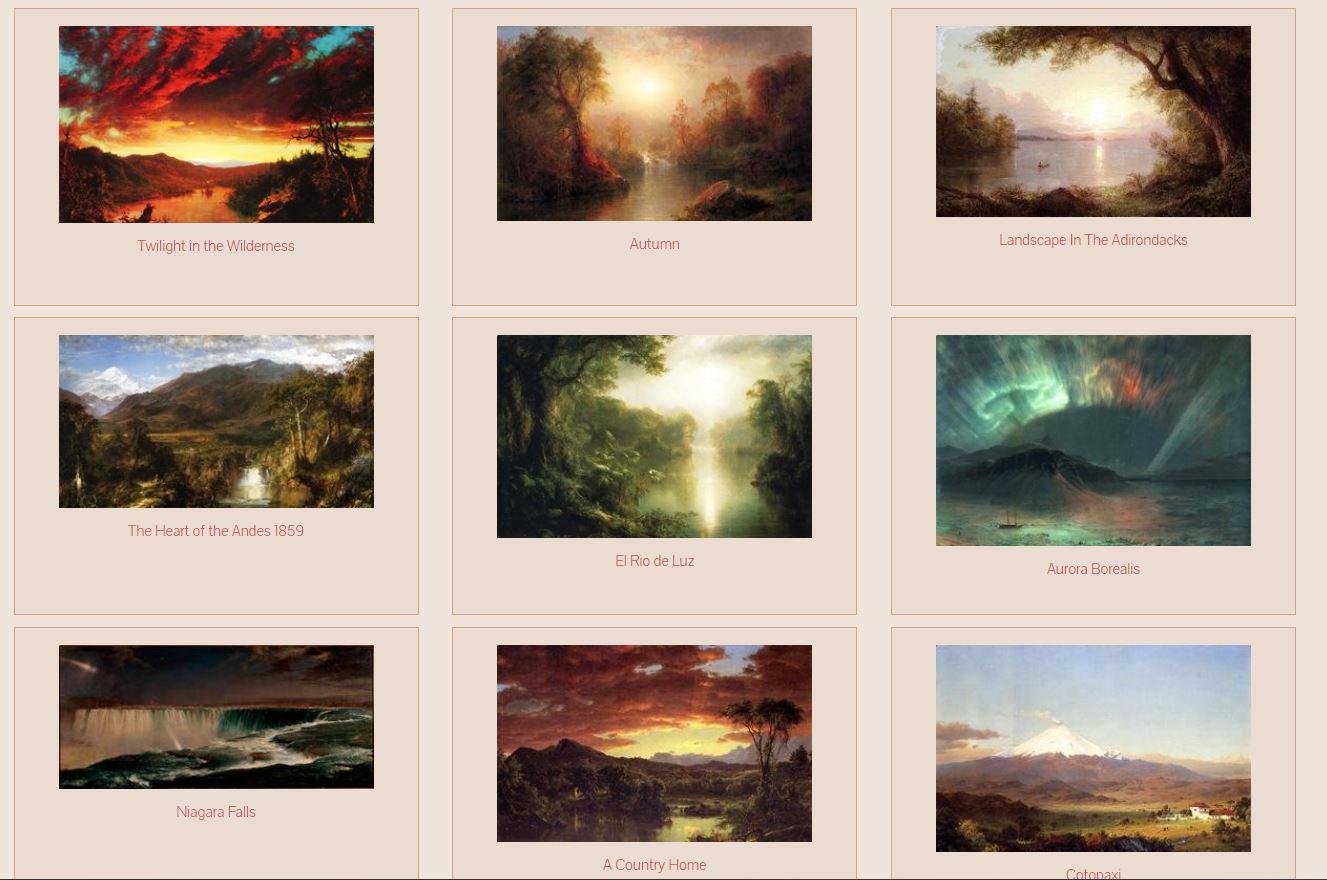Introduction
Sierra Nevada de Santa Marta (1883) was created by Frederic Edwin Church, an active member of a Hudson River School that treated nature through romanticism. This painting is presented in the Kemper Art Museum along with other landscapes of North and South America that were produced in the 19th century. At that time, the US was perceived as New Eden, when civilization did not yet affect nature. The Sierra Nevada de Santa Marta reflects the memories of the Church, who witnessed this New Eden’s beauty in terms of the upcoming modernity and industrialization.
Context, Artistic Movement, and Culture
The Sierra Nevada de Santa Marta is painted by oil on canvas, and its size is 40 1/16 x 60 1/8″. The painting presents the coastal mountain ranges of Colombia, namely, there is a composite view with mountains, a little bay, and palm trees, which create a sense of the lost paradise. The review of the painting allows noting that the artist uses a traditional picturesque landscape technique (Cao 67).
The air is clean and cool, and the entire scene below the horizon lies in transparent shadow. The radiance, apart from a glittering belt stretching around the horizon, gradually changes in shades, reminding the Eden gardens, while the distant mountains carve their purple edges. From this clear zone of soft light, clouds swirl in flaming arcs, expanding and bursting toward the zenith, where they intertwine with azure blue in deep golden splendor.
The Kemper Art Museum exhibit also provides other landscapes that were created in the mentioned period. Examples, Thomas Cole’s Aqueduct near Rome, Charles Emile Jacque’s Landscape with Sheep, George Caleb Bingham’s Daniel Boone Escorting Settlers through the Cumberland Gap, and others (Fig. 1-1 – 1-10).


These examples refer to the times when civilization did not touch them, likewise Eden, but something makes the viewers think that changes are coming. Probably, the golden lights, the contrasts between dark and bright colors, and the abundance of green promote such an impression. In addition, the exhibit contains Church’s other works, including Twilight: Mount Desert Island, Maine (Fig. 1-11), and New EnglandScenery (Fig. 1-12).


They also depict the richness of the beauty, while the former emphasizes the power of the night, and the latter focuses on pastoral motives. The other works of the Church also contain such characteristic features as golden lights, allegory, and sketching designs (Fig. 1-13 – 1-21).

To better understand the purpose of Sierra Nevada de Santa Marta, it is important to discuss the related artistic movement. The Hudson River School was a North American art movement that was extensively developed in the period between 1825 and 1880. It was formed by a group of landscape painters, who focused on a new aesthetic vision and tried to synthesize the principles of realism and romanticism (“Spotlight Essay: Frederic Edwin Church”). This artistic movement made a significant contribution to recognizing and building American territories, which started with the work of explorers, naturalists, and artists during the colonial period. The Hudson River School was the first national school of painting and the most remarkable movement in all nineteenth-century art in the US.
The Monroe Doctrine of 1823 and the era of Manifest Destiny are the main historical events that impacted how the artists of that period perceived reality (“Spotlight Essay: Frederic Edwin Church”). The American society considered that the expansion is justified and that any intervention in US politics is hostile. Consequently, the conquest and usage of the lands that were predominantly inhabited by Native Americans were considered righteous.
The key theme of the exhibit is the transformation of life from nature to industry and technology. On the one hand, it seems that the purpose of Sierra Nevada de Santa Marta and other mentioned artworks is to push back against industrialization as they praise the innocence and purity of the landscapes. On the other hand, the idea of change is embodied in these canvases as they produce the real sensations of the vibration of water, the shining of the sun, and the rustle of foliage. These details symbolize the inevitability of change as it will occur later or sooner.
All this magnificent perfection of the given painting uses an allegory to tell the viewers that the triumph of nature is amazing, but changes are expected (Cao 68). Nevertheless, even though one cannot state that the artists encourage people to protect nature, there is an evident call to admire and value its miracles. Accordingly, it is possible to evaluate Sierra Nevada de Santa Marta as a powerful artwork that greatly impacts those who visit this exhibit.
Conclusion
To conclude, Church’s Sierra Nevada de Santa Marta is a vivid example of an artwork that integrates realism and romanticism by translating the idea of nature’s beauty and change inevitability. The Hudson River School was considered to be the most important romantic expression in the history of American painting. The review of the exhibit and the artist’s other works makes it evident that culture and historical events of the 19th century in the US found their reflection in the landscapes, depicting the places untouched by civilization.
Works Cited
Cao, Maggie M. The End of Landscape in Nineteenth-Century America. University of California Press, 2018.
“Spotlight Essay: Frederic Edwin Church”. Sam Fox School, 2016, Web.